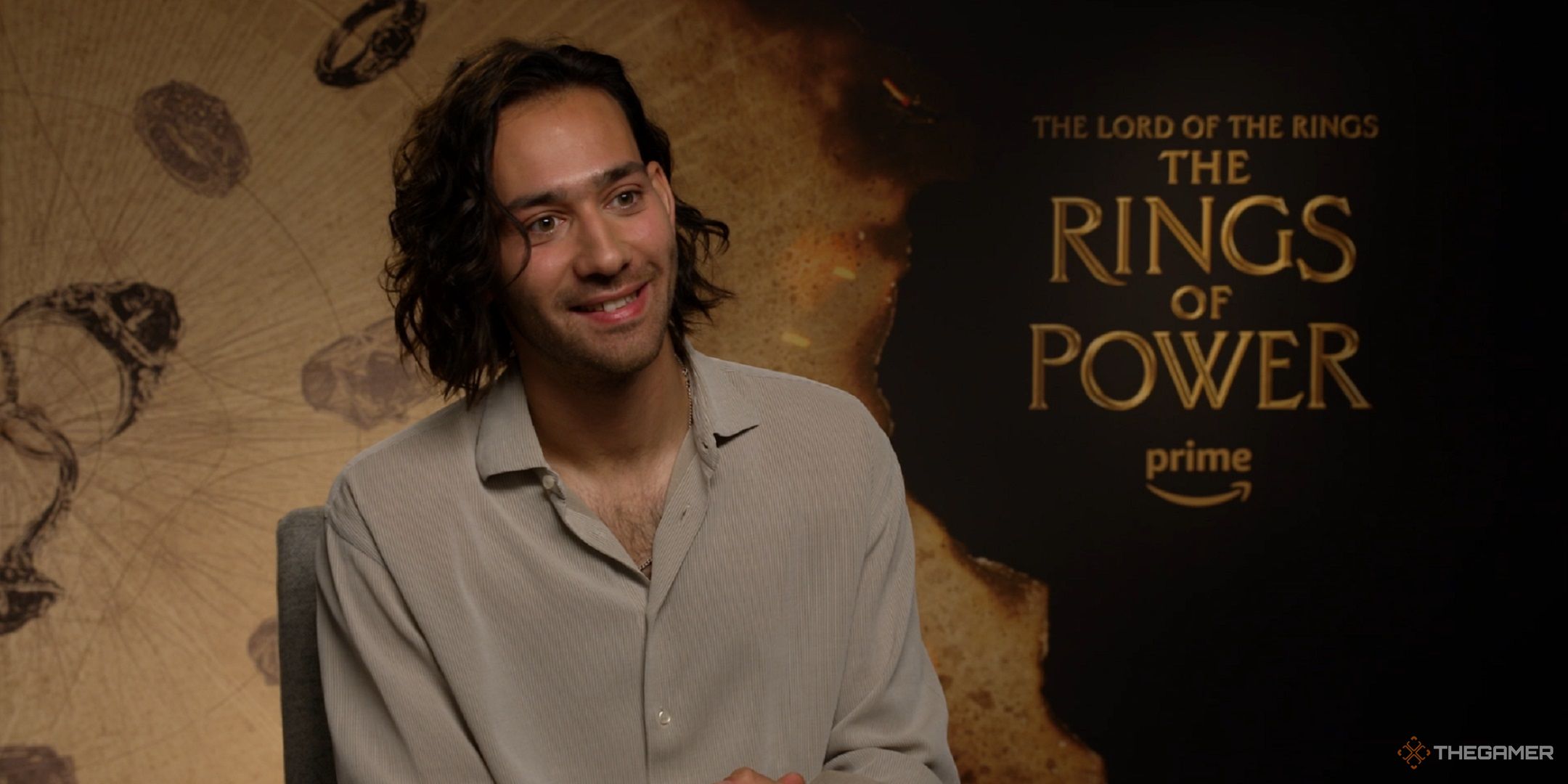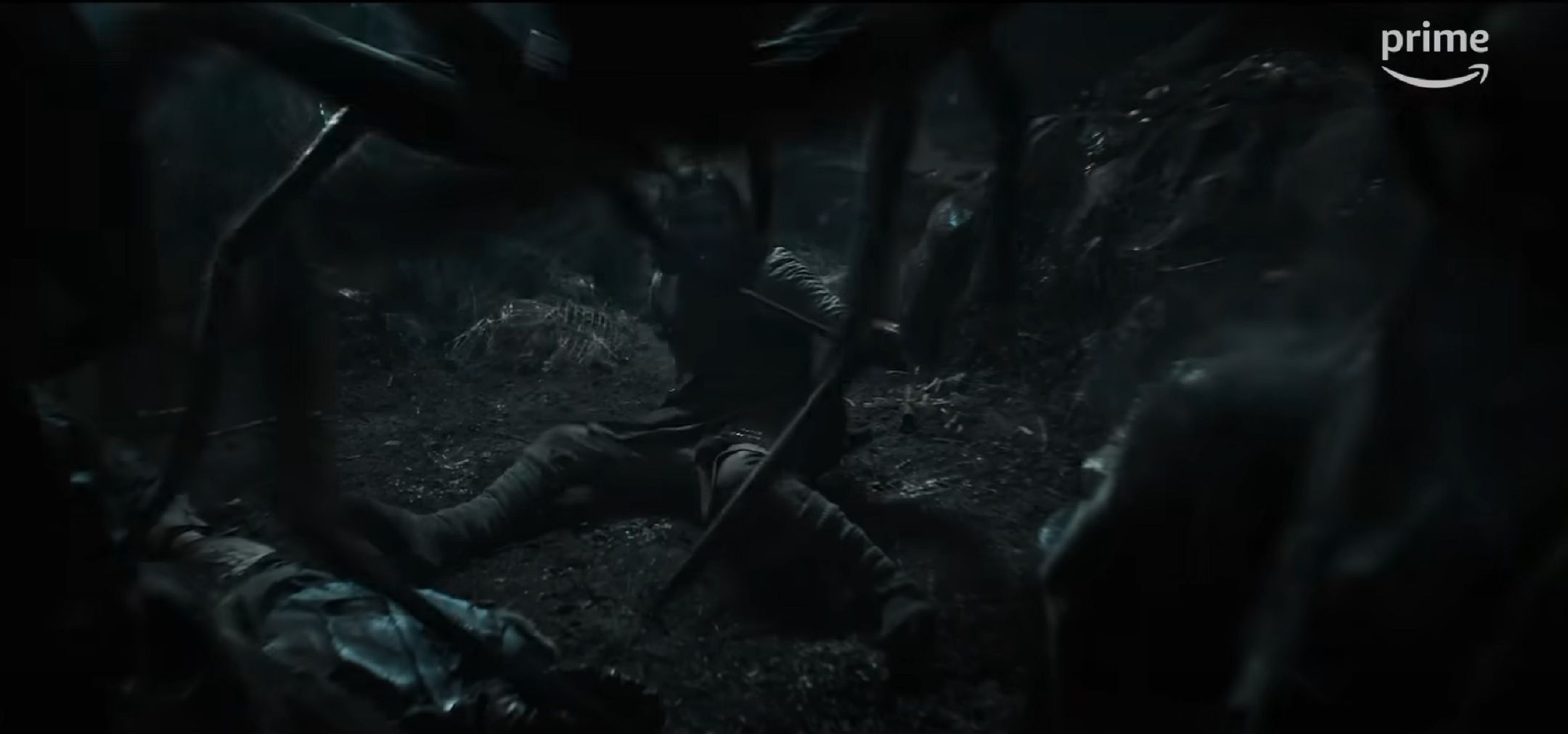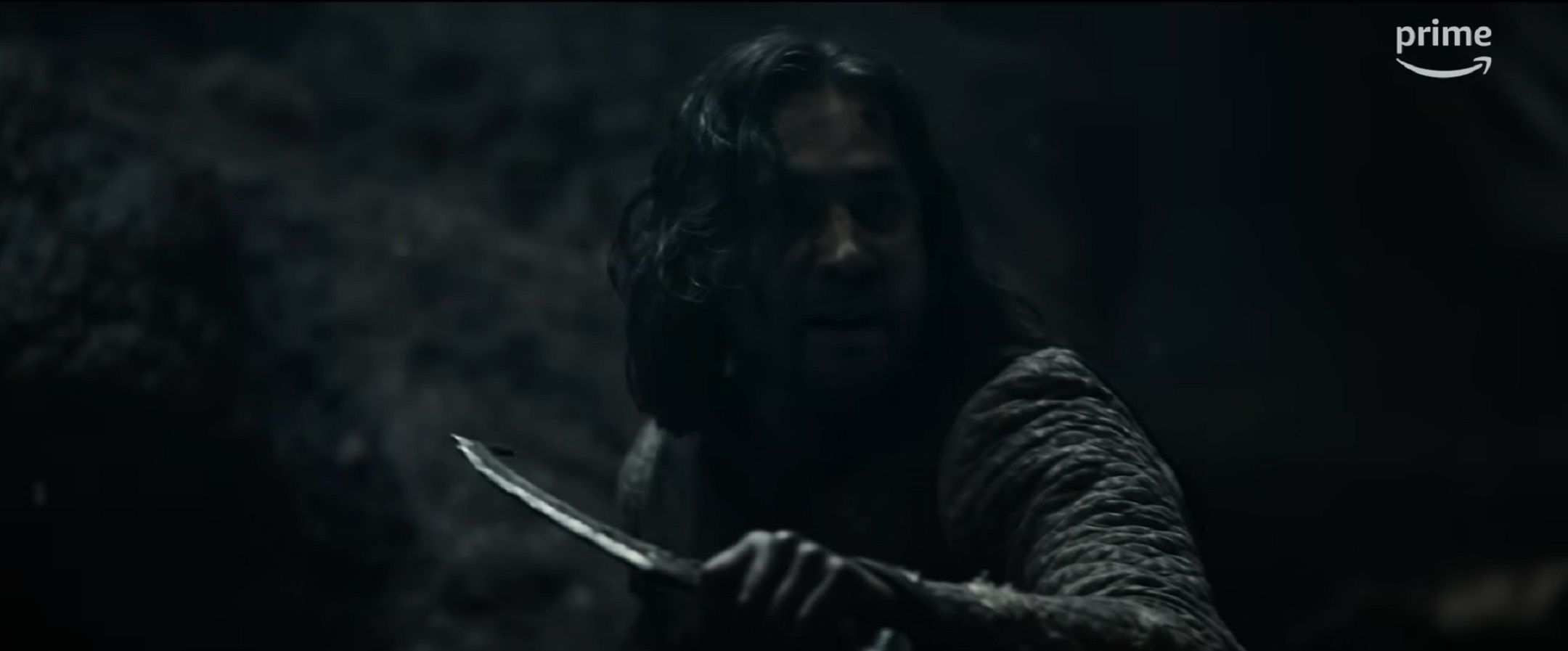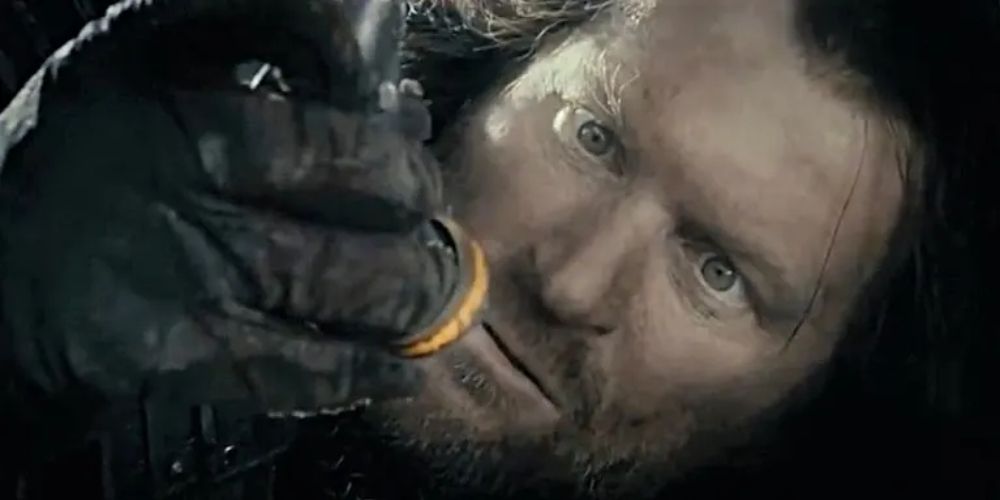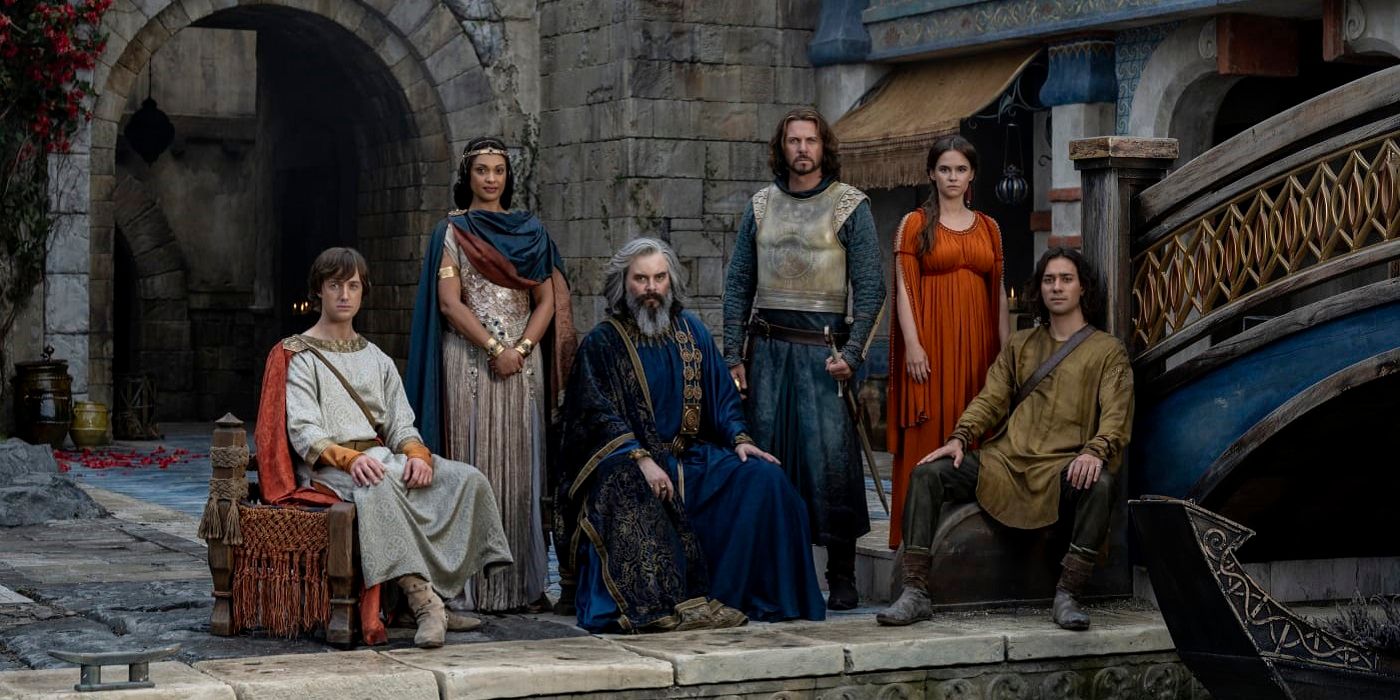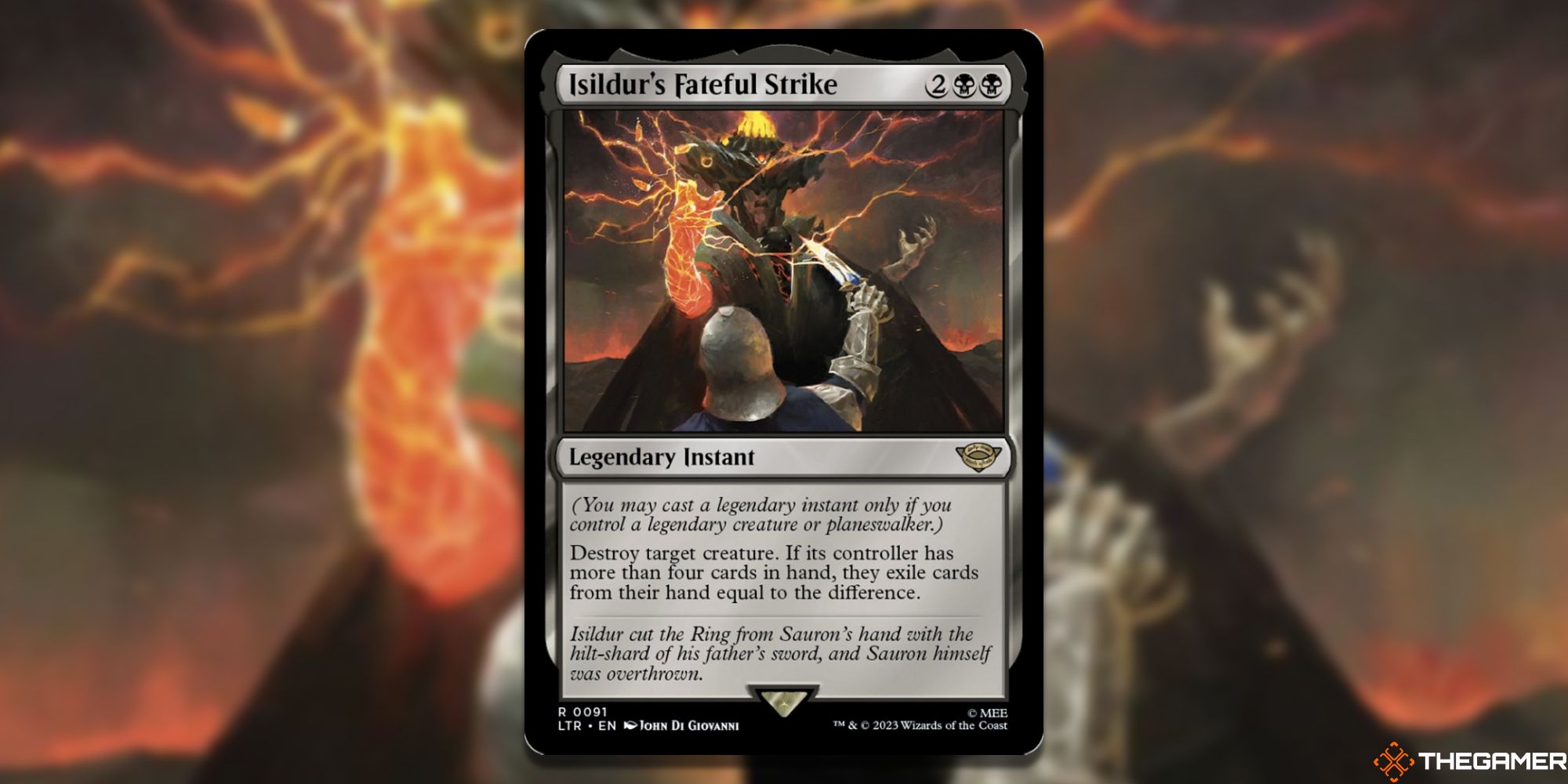Key findings
- Isildur’s journey in Season 2 of The Rings of Power is marked by intense battles and personal development.
- Actor Maxim Baldry has researched extensively to understand and develop Isildur’s character from his origins to his warrior status.
- Isildur’s rebelliousness and darkness may stem from a longing for love, adding depth to his portrayal in the series.
Isildur’s appearance in The Rings of Power Season 2 starts with a bang. While Annatar plans, Celebrimbor schemes, Galadriel recovers, and the dwarves worry, Isildur raises his sword and strikes hard.
Isildur is stranded in Middle Earth and abandoned by his people. His first task this season is to fight his way out of the barren landscape of Mordor and the surrounding area. Naturally, he starts by fighting a young Shelob in a narrow cave full of underground spiders.
“The first thing he has to do is fight an orc,” explains Isildur actor Maxim Baldry. “But orcs, the stuntmen with the prosthetics, have no peripheral vision at all. So it’s quite dangerous because they’re wearing these really big costumes, they’re wearing prosthetics and they’re quite physical. It’s quite dangerous.”
“Of course, all safety precautions are taken into account, but it was a bit harder and more physical (than fighting computer-generated creatures). With humans, you have to be a lot faster and more coordinated because you’re a lot closer and you can do more. To be honest, I kind of like the spider cave. I like it a bit wilder.”
However, Isildur is not just the fighter we know from the Last Alliance. He is a character that most fans already have a preconceived idea of from the original Lord of the Rings book trilogy or the films – and he doesn’t make the best impression when he takes the One Ring for himself and condemns Middle Earth to more centuries of darkness.
“He longs to be loved,” – Maxim Baldry about Isildur.
When I asked Baldry how he could challenge fans’ preconceptions about the character, he admitted that he, too, had his own idea of who Isildur was before taking on the role, and that he had to work hard to understand exactly what made him tick in the Second Age.
“I had to really dig deep into the research and come up with my own interpretation of (Isildur),” Baldry says. “And in some ways we had to reverse engineer Isildur, because we know where he ends, but where does he begin? That’s a blessing in a way, too, because we can really build him from the ground up.”
“So season 1 is a story about how he desperately wants to go away and explore the world. And season 2 is about him having to grow up and then desperately wanting to go home. It’s a story about his personal growth and him getting tougher, all the experiences in season 2 toughen him up. And he becomes a man and becomes more of a warrior than we really expect him to be.”
Although we know a lot about which characters Do In the Second Age, Tolkien’s style in The Silmarillion – and particularly about this era compared to his writings about the First Age – often lacks detail and characterization. Baldry therefore used this text as a basis for his character, but also read more and used insights from philosophers to get to the bottom of Isildur’s character development and rebellious streak.
“Tolkien was at the forefront of my research for (Isildur),” he explains. “But he doesn’t really give us much either. He gives us clues about things he does. Of course I read the Silmarillion, I read the trilogy, and that was my starting point. But then I also wanted to learn a bit more about Isildur’s character and I did a lot of research into Camus and the rebel. There was a quote from Camus, Rebellion is a strange form of love(sic) and I just liked how (Isildur’s) darkness could actually be a positive thing for him in some ways. He longs to be loved. And I think rather than it being such a dark and negative thing, what he ends up doing could be for a good reason.”
Any Tolkien fan understands the appeal of the Ring, even if they don’t forgive characters like Isildur and Borimir for their reactions to its dark magic. The artifact is temptation incarnate, Tolkien’s apple in the perfectly manicured Garden of Eden that is Middle Earth. But is there room for actors to give their own interpretations of iconic characters in adaptations of the groundbreaking fantasy work?
“Everyone has their own interpretation of the trilogy,” says Baldry. “But I think it’s important to remember that we’re playing human characters who interact with each other. And I’m playing a human, and these beings are inherently fallible, so it’s a fascinating role.”
“What are our motivations? What drives us? What is our environment? Where do we come from and how does that affect us? And I think all of those things are brewing right now and it’s building up from season to season. And I’m really excited to continue playing this character.”

